If you want to create a bird-friendly haven in your yard, planting the right flowers, shrubs, and trees can help attract beautiful bluebirds. These vibrant birds are not only stunning to watch, but they also play a vital role in controlling insects and pollinating plants.
In this article, we explore 24 plants that attract beautiful bluebirds to your yard. From berry-bearing bushes like elderberry and juniper to nectar-rich flowers such as coneflowers and sunflowers, these plants will provide the perfect food and shelter for bluebirds. If you’re eager to bring these charming creatures to your garden, these plant choices will make your yard a bluebird paradise!
Elderberry

Elderberry bushes are a favorite among bluebirds, thanks to their abundance of dark, juicy berries. These plants thrive in moist, well-drained soil and sunny spots. Besides feeding birds, elderberries contribute to biodiversity by attracting beneficial insects. Their rapid growth and dense foliage offer a perfect refuge for nesting. During blooming season, elderberry’s white flowers create a picturesque scene. This versatile plant is not only a delight for birds but also adds a charming rustic touch to gardens. Prune regularly to maintain shape and encourage new growth.
Dogwood

Dogwoods captivate with their stunning spring flowers and vivid fall foliage, creating a bird-friendly habitat year-round. These trees prefer well-drained soil and partial shade, making them suitable for various garden settings. Bluebirds are drawn to the rich berries, a crucial food source during migration. Dogwood’s dense branches offer excellent nesting sites, while its roots stabilize soil, preventing erosion. Regular mulching and watering help maintain its health and vibrancy. The tree’s elegance and ecological benefits make it a perfect addition to bird-friendly landscapes.
Hawthorn

Hawthorn trees boast an array of edible red berries that bluebirds adore. These trees flourish in well-drained soil, tolerating both sun and partial shade. With their thorny branches, hawthorns provide secure nesting sites, deterring predators. In spring, you’ll witness a burst of pink or white flowers, adding to your garden’s allure. Regular pruning encourages healthy growth and abundant berry production. Hawthorns not only attract bluebirds but also contribute to a lively ecosystem. Their resilience and beauty make them a valuable addition to any landscape.
American Holly
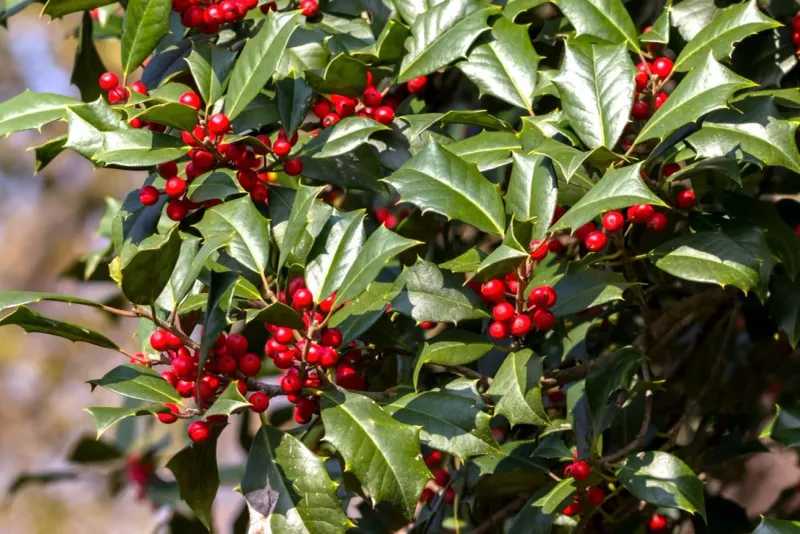
American holly is a classic choice for attracting bluebirds, offering bright red berries throughout winter. This evergreen thrives in well-drained, acidic soil and adapts to sun or partial shade. Its dense foliage provides excellent shelter and nesting sites. In addition to its aesthetic appeal, holly supports various wildlife, making it a cornerstone of a bird-friendly garden. Prune selectively to maintain its shape and promote berry production. As a symbol of holiday cheer, holly also brings seasonal beauty to gardens, keeping the winter landscape vibrant and inviting.
Red Cedar
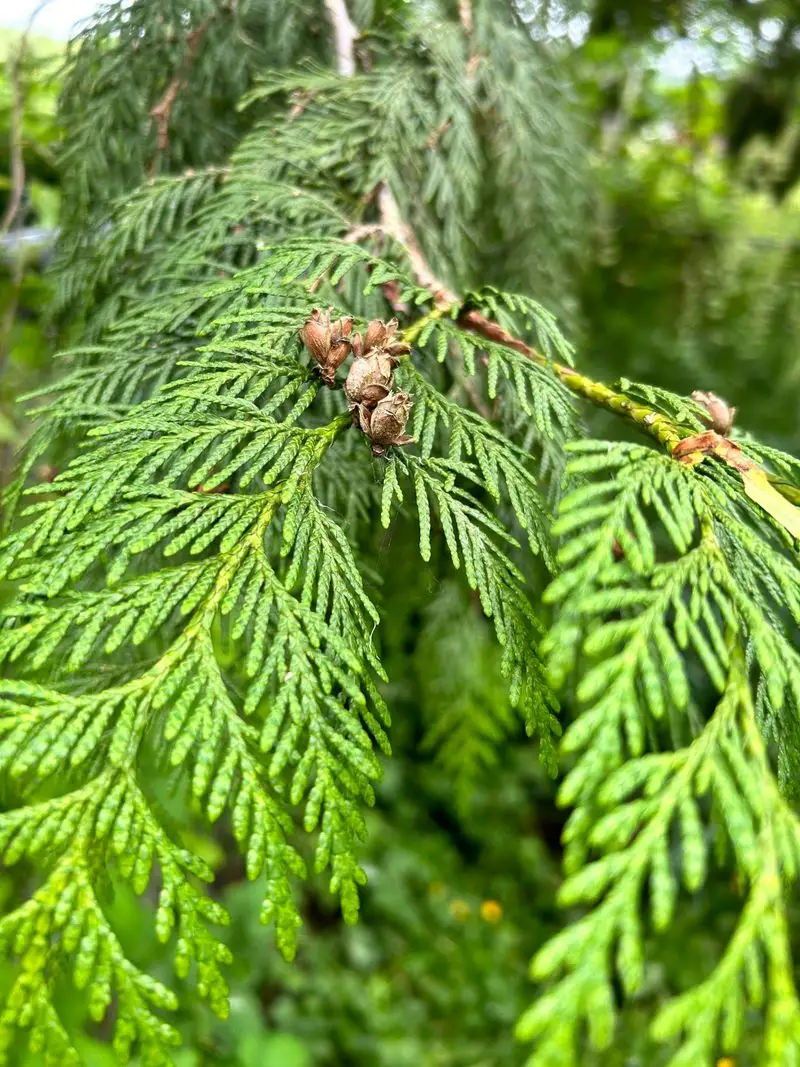
Red cedar offers more than just rugged beauty; it provides vital resources for bluebirds. These evergreens flourish in dry, well-drained soil and full sun. Their berries serve as a nutritious food source during colder months. With dense foliage, red cedars offer perfect nesting sites and protection from harsh weather. The tree’s aromatic wood repels insects, enhancing its appeal. Regular mulching and pruning promote healthy growth. Besides attracting bluebirds, red cedar contributes to a thriving ecosystem, supporting a diverse range of wildlife throughout the year.
Mulberry
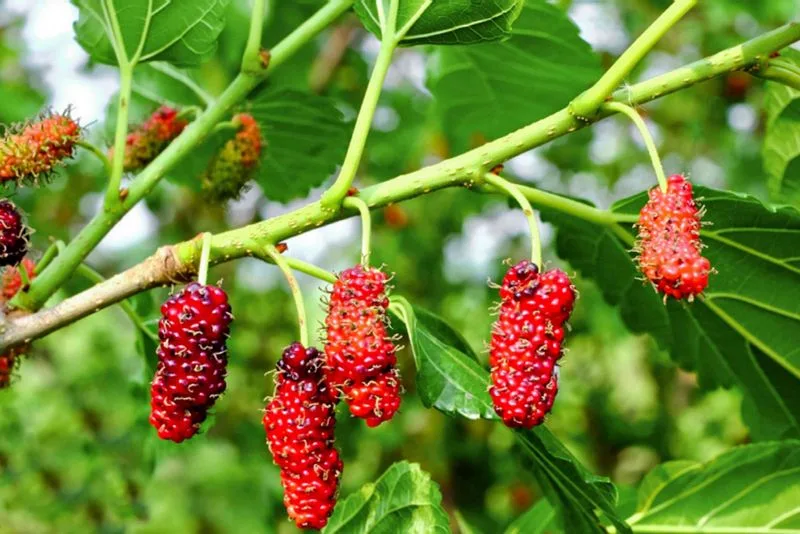
Mulberry trees are a feast for bluebirds, thanks to their abundance of juicy, sweet berries. These trees thrive in a variety of soil types and prefer full sun. Besides their value to wildlife, mulberries grow quickly, providing shade and privacy. Regular pruning helps manage their size and encourages fruit production. During the fruiting season, the tree becomes a lively hub of bird activity. Its lush foliage also offers excellent nesting sites. Mulberry’s adaptability and abundance make it a fantastic choice for bird lovers seeking to enhance their garden’s appeal.
Chokeberry
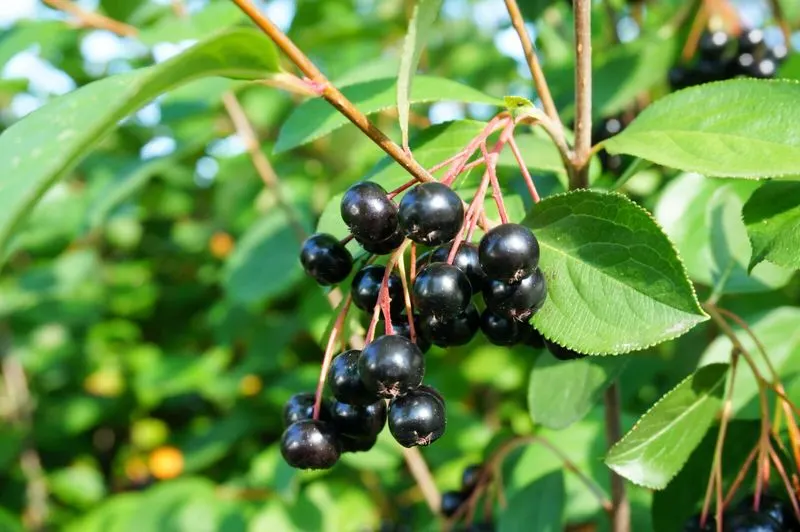
Chokeberry bushes are a powerhouse of nutrients for bluebirds, offering clusters of dark, antioxidant-rich berries. These shrubs thrive in a range of soil conditions, from sandy to clay, and prefer full sun to partial shade. In addition to attracting birds, chokeberries support pollinators, enhancing biodiversity. Their vibrant red foliage in fall adds visual interest to gardens. Regular pruning promotes healthy growth and berry production. By planting chokeberries, you’re not only inviting bluebirds but also contributing to a balanced and thriving garden ecosystem.
Mountain Ash
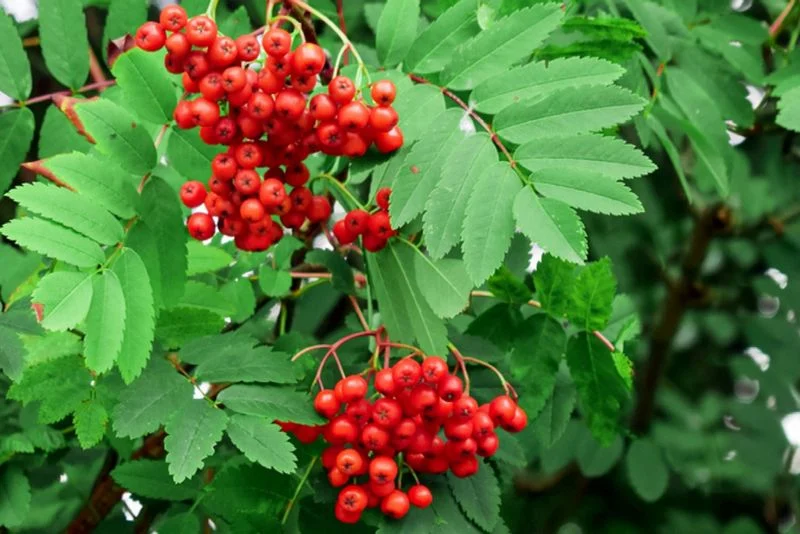
Mountain ash captivates with its vibrant orange-red berries that bluebirds find irresistible. This hardy tree thrives in well-drained soil and full sun, adding height and interest to landscapes. Its dense clusters of berries serve as a vital food source during cold months. Beyond feeding birds, the mountain ash provides excellent nesting sites. Regular watering and mulching support its health and longevity. The tree’s feathery leaves and striking berries create a picturesque scene, making it a standout feature in bird-friendly gardens.
Crabapple
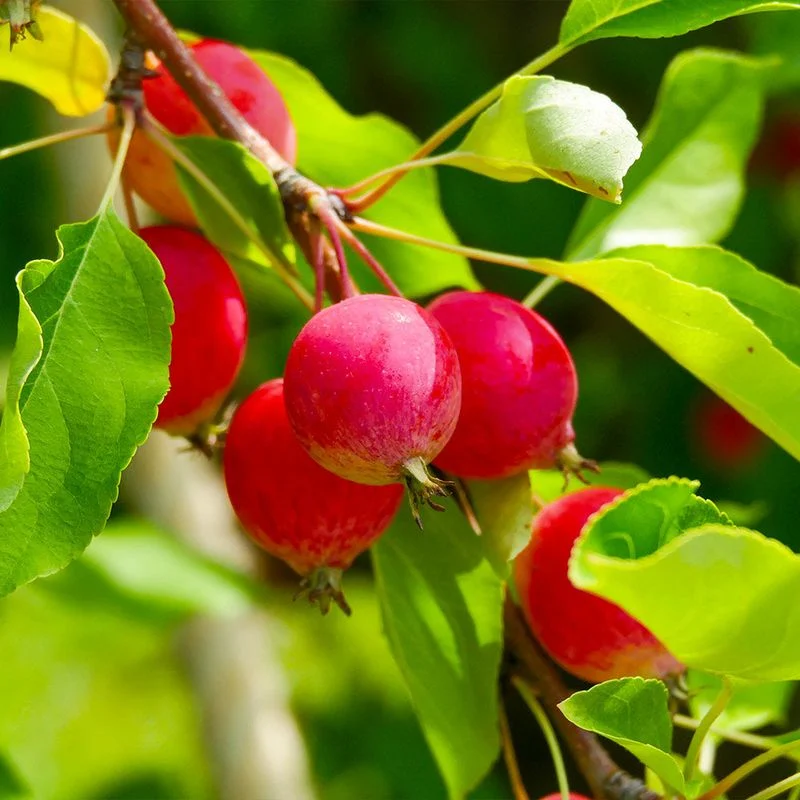
Crabapple trees are a top choice for attracting bluebirds with their profusion of small, tasty apples. These trees thrive in well-drained soil and full sun, offering both beauty and functionality. During spring, crabapples burst into life with vibrant pink and white blossoms. The fruit that follows provides essential nutrition for birds. Regular pruning helps maintain their shape and encourages abundant fruiting. In addition to feeding bluebirds, crabapples support pollinators, enhancing your garden’s ecosystem. Their ornamental value and wildlife benefits make them a beloved choice for bird enthusiasts.
Winterberry
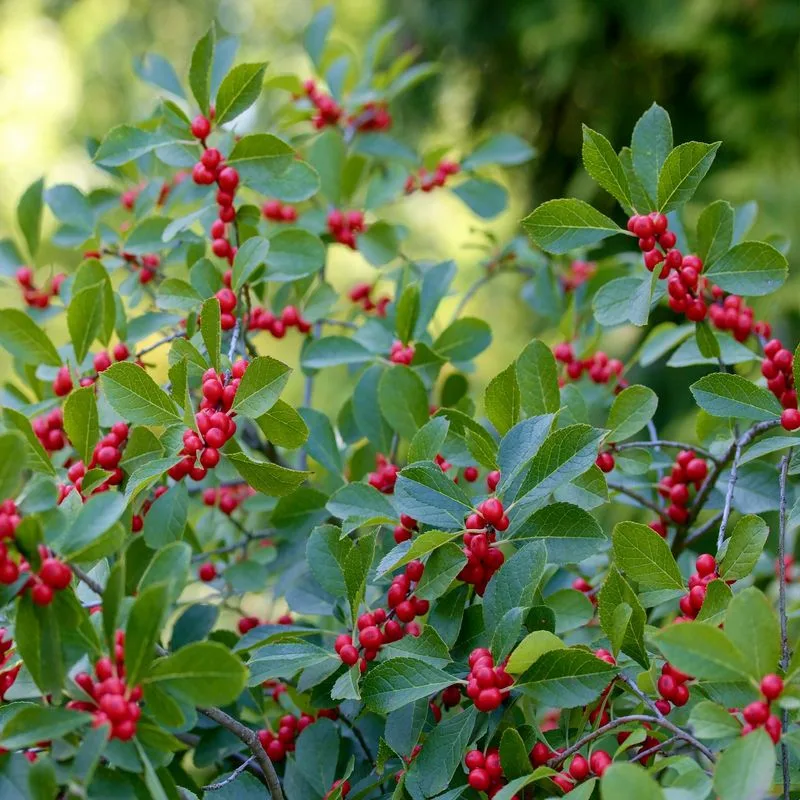
Winterberry stands out with its vibrant red berries that persist through winter, offering a crucial food source for bluebirds. This deciduous shrub thrives in moist, acidic soil and tolerates sun or partial shade. Besides feeding birds, winterberry’s dense branches provide excellent cover and nesting sites. During the colder months, its bright berries add a splash of color to the landscape. Regular pruning promotes healthy growth and berry production. Winterberry’s seasonal beauty and ecological benefits make it a valuable addition to bird-friendly gardens.
Blueberry
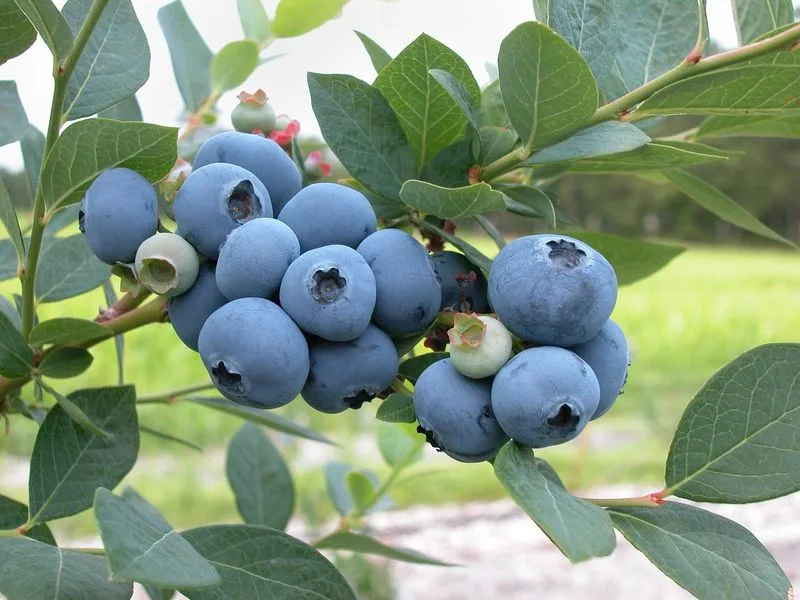
Blueberry bushes offer a bountiful harvest of sweet berries that delight bluebirds and gardeners alike. These shrubs prefer acidic, well-drained soil and full sun. Beyond their nutritional value, blueberries support pollinators, enhancing your garden’s biodiversity. Their compact size makes them suitable for various spaces, from large gardens to patios. Regular pruning encourages healthy growth and abundant fruiting. During fruiting season, blueberries become a focal point of bird activity. Whether enjoyed fresh or frozen, they provide a sustainable food source for bluebirds, making them a cherished garden addition.
Sumac
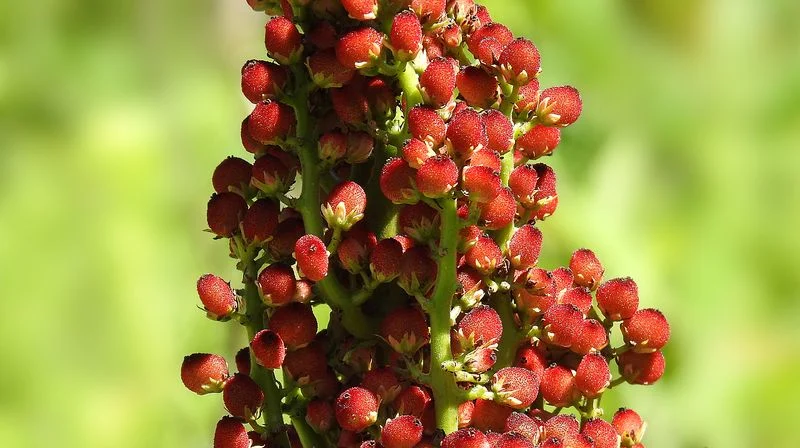
Sumac offers stunning clusters of red berries that attract bluebirds during fall and winter. These hardy plants thrive in well-drained soil and full sun, bringing vibrant colors to landscapes. Besides feeding birds, sumac provides excellent cover and nesting opportunities. Its resilient nature makes it suitable for challenging locations, such as slopes or rocky areas. Regular pruning helps manage its growth and encourages berry production. The plant’s fiery autumn display and ecological benefits make it an appealing choice for those looking to support wildlife in their gardens.
Bayberry
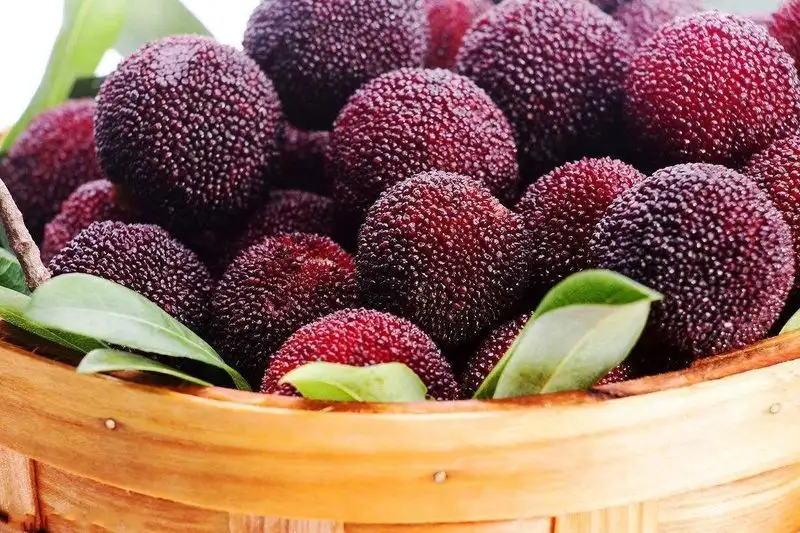
Bayberry bushes offer waxy gray berries that attract bluebirds, providing essential nourishment during winter. These hardy shrubs thrive in sandy, well-drained soil and full sun. Besides their value to birds, bayberries add a pleasant fragrance and visual interest to gardens. Their dense foliage offers excellent cover, enhancing nesting opportunities. Regular pruning helps maintain their shape and promotes berry production. Bayberry’s unique berries and aromatic leaves make it a distinctive choice for those seeking to create a bird-friendly environment. Its adaptability and beauty enhance garden aesthetics year-round.
Wild Grape
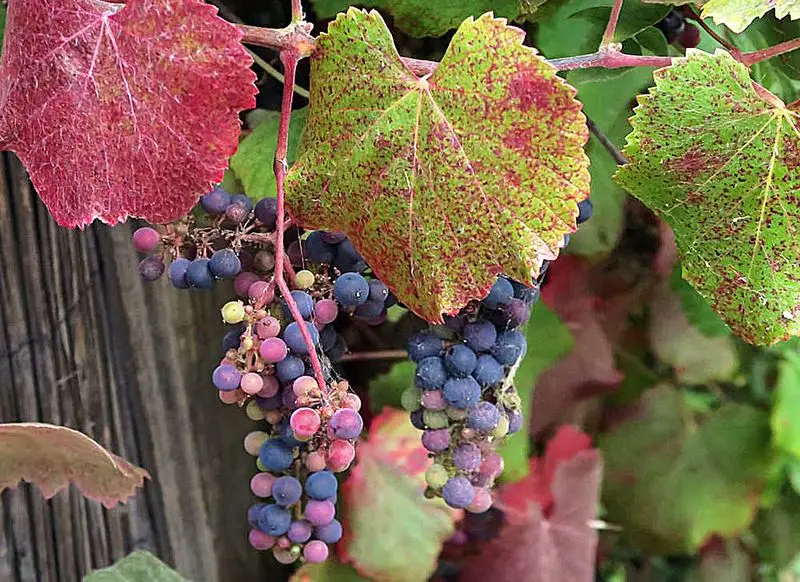
Wild grapevines produce clusters of sweet grapes that are a magnet for bluebirds. These vigorous plants thrive in sunny locations with well-drained soil, providing both food and shelter for birds. Their trailing vines and broad leaves offer excellent cover and nesting sites. Regular pruning helps manage their growth and encourages fruiting. As grapes ripen, the vine becomes a hub of bird activity, adding life and movement to the garden. Wild grape’s rustic charm and ecological benefits make it a desirable addition for those aiming to attract bluebirds and enhance their garden’s beauty.
Raspberry

Raspberry bushes are a sweet delight for bluebirds, offering clusters of juicy berries throughout the summer. These plants thrive in well-drained, fertile soil and full sun. Beyond their bird appeal, raspberries support pollinators, enhancing garden biodiversity. Their thorny branches offer excellent nesting sites, providing protection from predators. Regular pruning and mulching promote healthy growth and fruit production. During fruiting season, raspberry bushes become a lively center of bird activity. Their delicious berries and ecological benefits make them a popular choice for bird enthusiasts looking to enrich their garden.
Blackberry
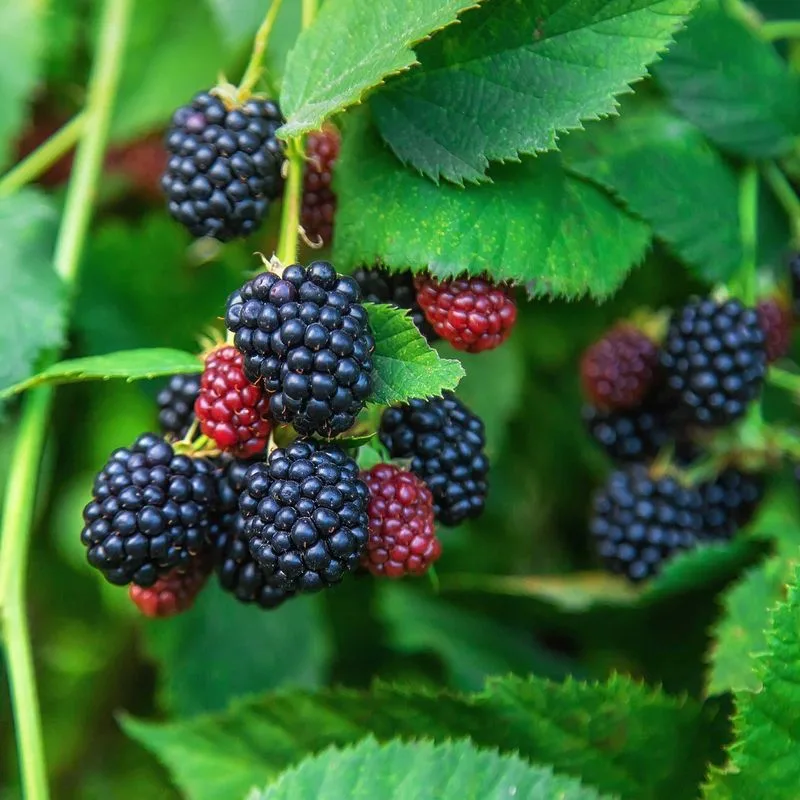
Blackberry bushes offer a bounty of juicy berries that bluebirds find irresistible. These hardy plants thrive in well-drained, fertile soil and full sun, providing both food and shelter for birds. Their thorny canes offer protection and nesting opportunities, enhancing garden biodiversity. Regular pruning helps manage their growth and encourages abundant berry production. During the fruiting season, blackberry bushes become a hub of bird activity, adding vibrancy and life to the landscape. Their delicious fruits and ecological benefits make them a beloved addition to bird-friendly gardens.
Gooseberry
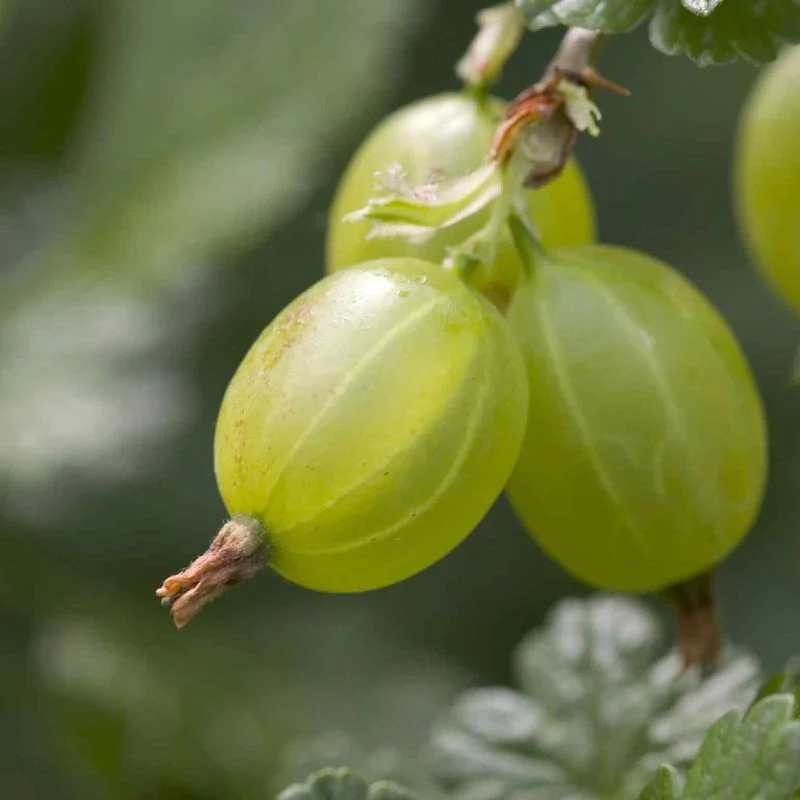
Gooseberry bushes offer a tempting array of berries that attract bluebirds, providing essential nutrition. These plants thrive in well-drained soil and full sun to partial shade. Besides feeding birds, gooseberries support pollinators, enhancing garden biodiversity. Their thorny branches offer excellent nesting sites, providing protection from predators. Regular pruning and mulching promote healthy growth and abundant fruiting. During fruiting season, gooseberry bushes become a focal point of bird activity. Their tart berries and ecological benefits make them a unique choice for bird lovers seeking to enrich their garden’s appeal.
Blackhaw Viburnum
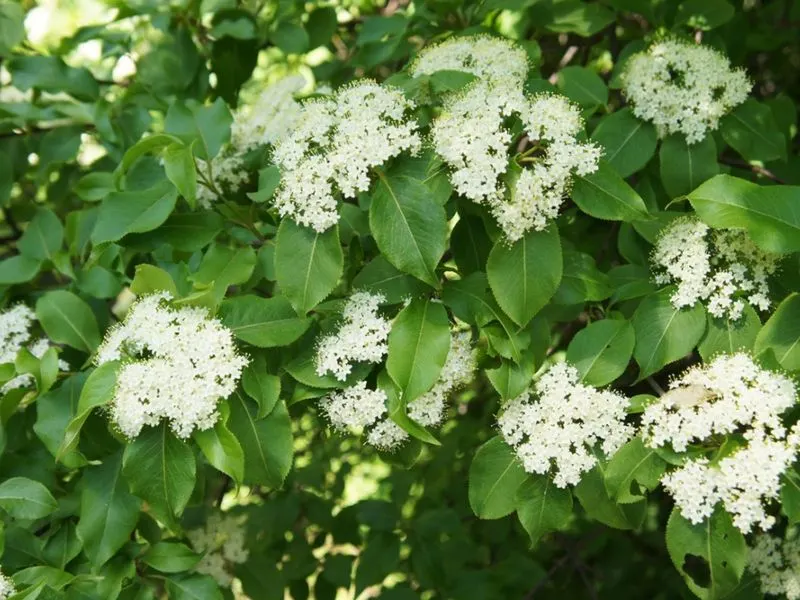
Blackhaw viburnum offers clusters of rich black berries that bluebirds adore, providing crucial nutrition. These shrubs thrive in well-drained soil and full sun to partial shade, adding texture and interest to gardens. Beyond feeding birds, blackhaw viburnum supports pollinators, enhancing biodiversity. Their dense branches offer excellent cover and nesting sites, providing protection from harsh weather. Regular pruning promotes healthy growth and berry production. The shrub’s resilience and ecological benefits make it a valuable addition for those looking to attract bluebirds and support wildlife in their gardens.
Arrowwood Viburnum
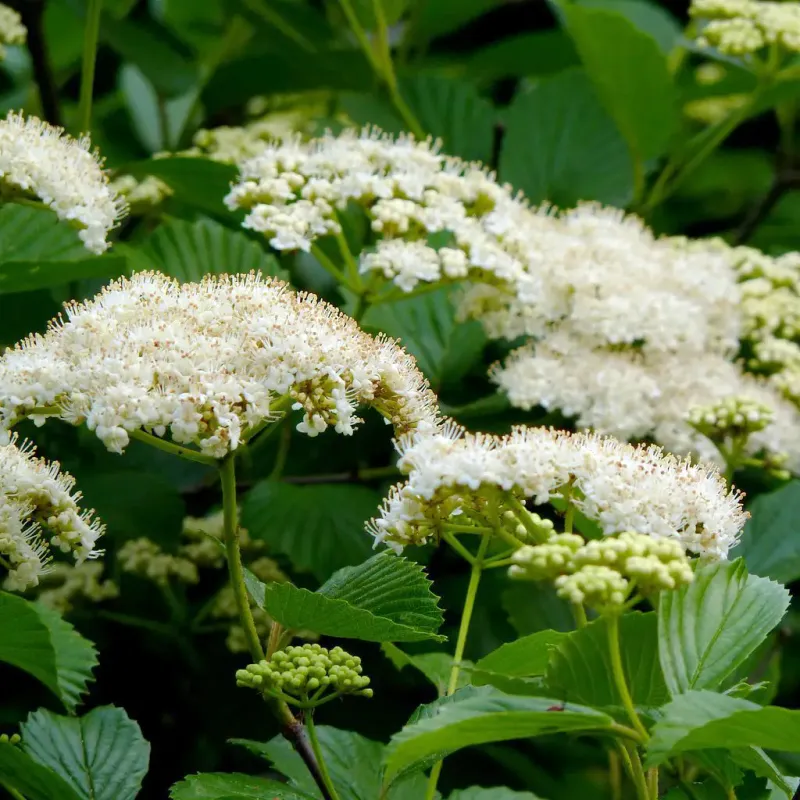
Arrowwood viburnum is a magnet for bluebirds, thanks to its clusters of blue-black berries. These hardy shrubs thrive in well-drained soil and full sun to partial shade. Besides feeding birds, arrowwood viburnum supports pollinators and enhances garden biodiversity. Their dense branches offer excellent cover and nesting opportunities, providing protection from predators. Regular pruning helps maintain their shape and encourages berry production. During the fruiting season, these shrubs become a lively center of bird activity. Their ecological benefits and aesthetic appeal make them a popular choice for bird-friendly gardens.
Wild Cherry
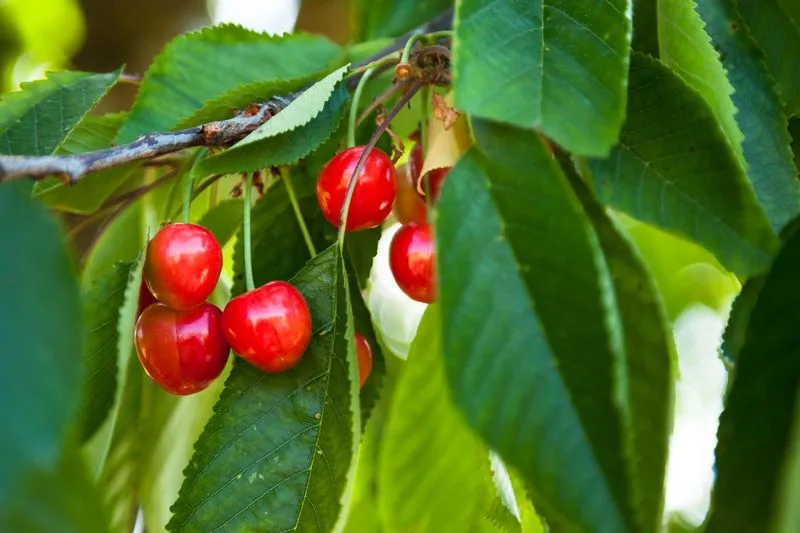
Wild cherry trees offer a feast of sweet cherries that bluebirds find irresistible. These trees thrive in well-drained soil and full sun, adding height and beauty to landscapes. Besides their value to birds, wild cherries support pollinators, enhancing biodiversity. Their dense branches offer excellent nesting sites, providing cover and protection. Regular pruning promotes healthy growth and abundant fruit production. During the fruiting season, wild cherry trees become a vibrant hub of bird activity, bringing life and movement to the garden. Their delicious fruits and ecological benefits make them a beloved choice for bird enthusiasts.
Juniper
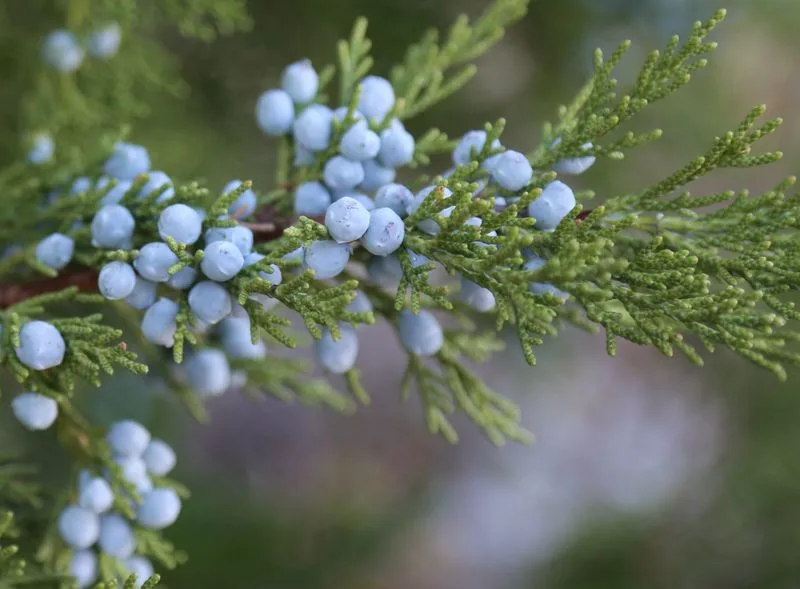
Juniper bushes offer a bounty of blue berries that attract bluebirds, providing essential nutrition during winter. These hardy shrubs thrive in well-drained soil and full sun, bringing texture and color to landscapes. Besides feeding birds, junipers support a diverse range of wildlife, enhancing garden biodiversity. Their dense branches offer excellent cover and nesting opportunities, providing protection from predators. Regular pruning helps maintain their shape and promotes berry production. The shrub’s resilience and ecological benefits make it a valuable addition for those looking to attract bluebirds and support wildlife in their gardens.
Nannyberry Viburnum
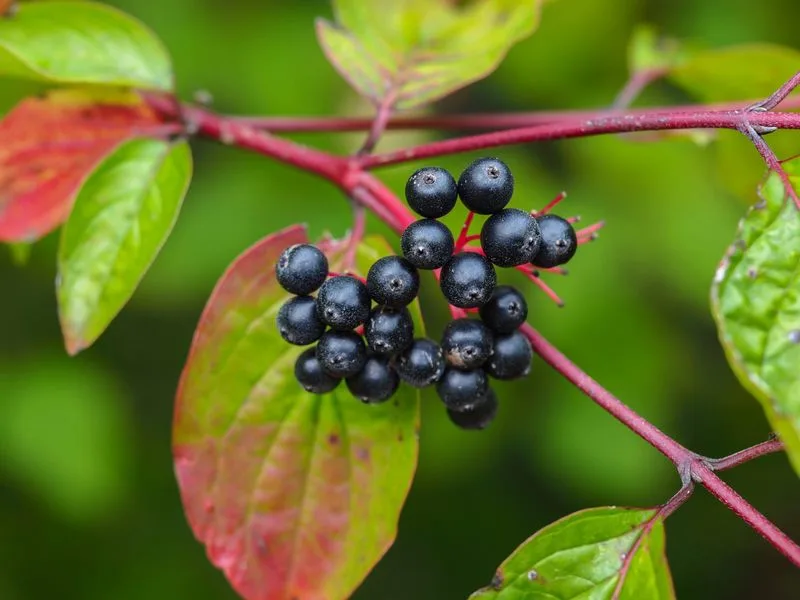
Nannyberry viburnum is a favorite among bluebirds for its clusters of ripe berries. These shrubs thrive in well-drained soil and full sun to partial shade. Beyond feeding birds, nannyberry viburnum supports pollinators, enhancing biodiversity. Their dense branches offer excellent cover and nesting sites, providing protection from harsh weather. Regular pruning promotes healthy growth and berry production. The shrub’s adaptability and ecological benefits make it a valuable addition for those looking to attract bluebirds and support wildlife in their gardens. Its aesthetic appeal also enhances garden beauty year-round.
Elderflower
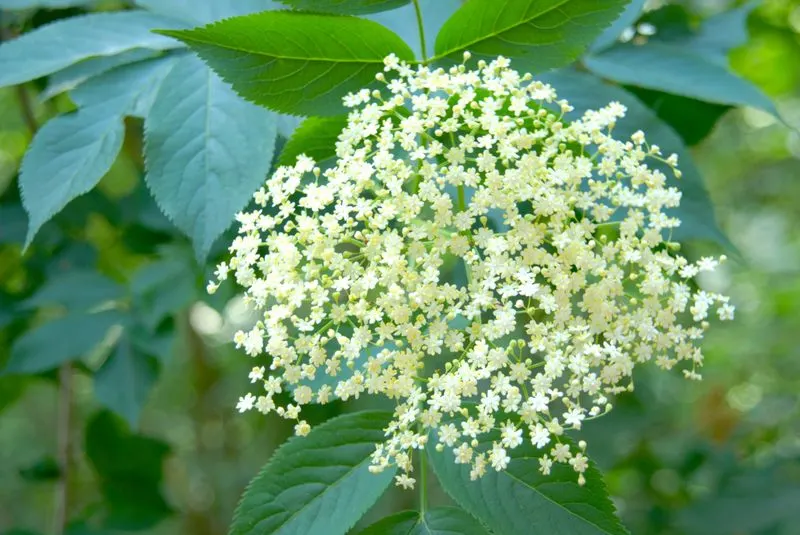
Elderflower bushes offer a bounty of sweet nectar and dark berries that bluebirds adore. These shrubs thrive in moist, well-drained soil and sunny spots. Beyond supporting birds, elderflowers attract beneficial insects, enhancing biodiversity. Their rapid growth and dense foliage provide excellent nesting sites. During blooming season, elderflower’s white blossoms create a picturesque scene. This versatile plant is a delight for both birds and garden enthusiasts, adding a charming rustic touch to any landscape. Regular pruning helps maintain shape and encourages new growth, making it a valuable addition to bird-friendly gardens.
Snowberry
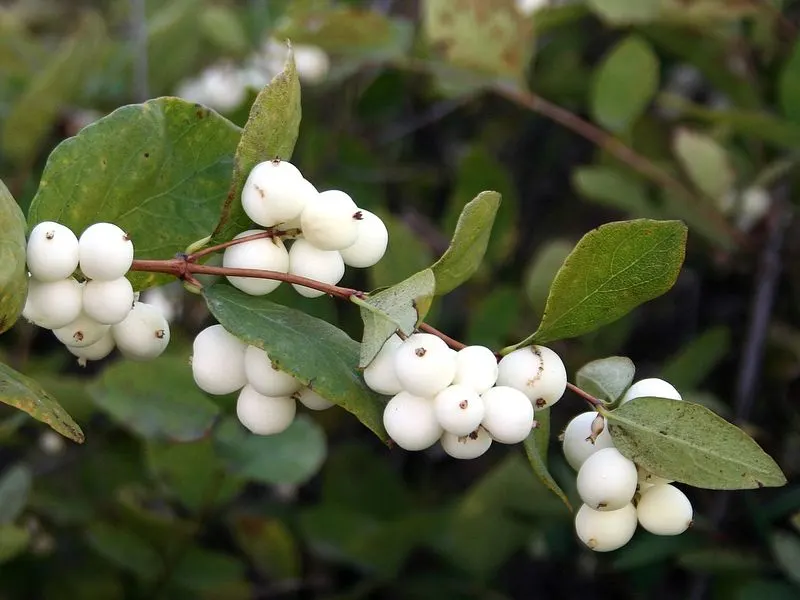
Snowberry bushes offer a unique display with their clusters of white berries, attracting bluebirds throughout winter. These hardy shrubs thrive in well-drained soil and full sun to partial shade. Besides feeding birds, snowberries support a variety of wildlife, enhancing garden biodiversity. Their dense branches offer excellent cover and nesting opportunities. Regular pruning promotes healthy growth and berry production. Snowberry’s striking winter display and ecological benefits make it a cherished choice for those looking to attract bluebirds and support wildlife in their gardens. Their aesthetic appeal also enhances garden beauty year-round.

